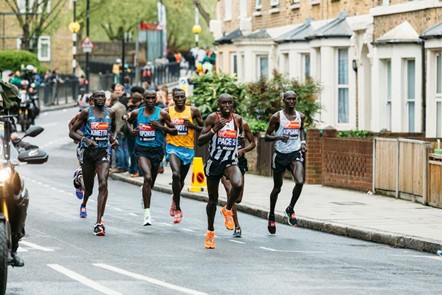Despite the widespread obsession of runners with improving their times and training at high intensity, there is an emerging trend called slow running that has many benefits for the body.
Runners are obsessed with time. Whether amateur or professional, for most avid runners the goal is to get faster, constantly training to shave even a couple of seconds off their marathon or 5K times.
This contrasts with a running trend that has started to gain momentum in recent years: slow running. The idea behind this easy running movement is that anyone can, and should, run, regardless of their ability or how fast they run.
Proponents of this approach claim that it has many advantages, not only because of the health benefits but also because of the pleasure that slow running brings. Interestingly, recent research confirms this: there is scientific evidence that slow running can be, in some ways, more beneficial than training at a higher intensity.
Running at a pace that allows for conversation
When you think of elite runners like Eliud Kipchoge or Kelvin Kiptum, you might assume that they train primarily at fast paces to set world records. Surprisingly, elite runners spend around 80% of their time training at what is called Zone 2 running .
That is a pace that raises your heart rate but is still slow enough to be able to hold a conversation. Therefore, only about 20% of your training is done in the highest intensity zones, close to your actual running pace.
Why? The answer has to do with the stress that training places on the body. As running speed increases, the stress on the body increases. And the greater the stress, the greater the risk that a person will suffer from illness, infection, and injury. Hence the interest in limiting the time athletes spend training at high intensities.
The base must be solid.
But this approach is not limited to reducing the risk of injury and illness, far from it. A fundamental aspect of training is developing what is known as base. In the case of endurance runners, this refers to physiologically developing a basic cardiorespiratory condition that serves as a starting point for building higher-intensity adaptations.
Let’s think of a pyramid: it must have a solid foundation on which the rest of the structure is built. The bigger the base, the higher the pyramid can become. The same goes for training: the better our foundation, the more capable we are of working at higher intensities.

(Photo: Shutterstock)
Running slowly burns more fat and benefits the heart
Our base is developed during slow running (zone 2), where physiological stress is relatively low. But even though the heart is not subjected to much stress during running in zone 2, the amount of oxygenated blood leaving the heart with each beat will reach (or stay close to) the maximum possible volume.
Higher intensities will not increase that capacity, so developing a strong base allows more oxygen to reach the moving muscles per beat, which is crucial for success during the race.
Not only that, running at a slow pace also causes the body to use stored fat as an energy source, instead of relying on carbohydrate reserves from the food we eat.
Burning fat is a much more metabolically efficient process, as the amount of energy derived from a single fat molecule far exceeds the amount from a carbohydrate molecule. This means that slow runners will use less energy be less fatigued and better able to run fast on race day.
Studies have shown that gains in VO2 max (oxygen capacity) and running speed are about 1% greater for athletes who spend more time running slowly. More importantly, the increase in aerobic base is about five times greater in slow runners compared to athletes who run more frequently at high intensities.
Even if we are not professional athletes, trying to make most of our runs low-intensity can still be the best option.
Slow and steady, allowing you to hum loudly without panting
If you want to try slow running, the most important thing is to choose the right pace. How do we know if we are at the right speed to be considered slow running?
Some scientists divide running pace into five or six different zones. Physiologically, zone 2 is defined as below the lactate threshold, i.e. the point at which lactate (an acid the body produces when it starts burning carbohydrates for energy, known to cause muscle soreness) starts to appear in the blood.
Simply put, this should be at a speed where we can still carry on a conversation and our heart rate is only around 70% of our maximum. If we find it difficult to carry on a conversation, it is a good idea to slow down the pace.
If you’re running alone, you can try singing out loud to yourself. If you can do this without having to struggle to catch your breath, you’re in the right zone. If you’re having trouble breathing, it means you’re moving at too high an intensity and lactate will start to build up in your muscles, making your legs feel heavy.
There are many benefits to slow running, both for your body and your mental health. So if you’ve always been embarrassed about running slowly, maybe this will encourage you to lace up your trainers and go for a run.![]()






















+ There are no comments
Add yours